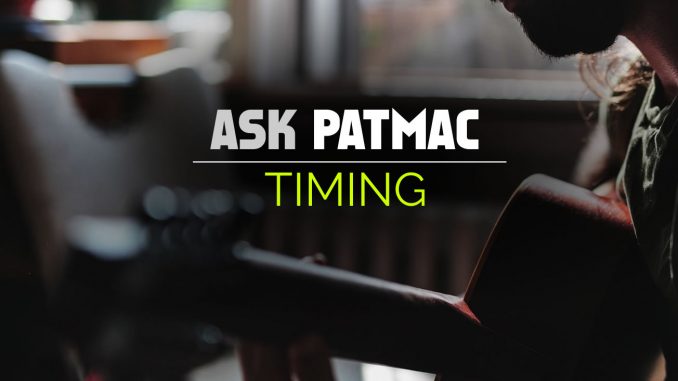
Question
In making an arrangement with any song. How close must a person stay to the original timing. I have been told I can vary within a measure, but must be with count 1 of the next measure. Was I mislead, or do I have more to learn?
~ Robert
Answer
You were somewhat misled, but not entirely. I don’t recommend varying within a measure on purpose, but I do recommend getting back “on the beat” to start the next measure. Let me explain three timing-related scenarios.
If you are playing notated music, you want to stick to the specified timing. A common problem with timing is when a musician gets out of sync with the rest of the band. This will not sound as intended. If you fall into this trap, catching up on beat 1 of a measure is a great way to get back into sync even if you have to stop playing for a measure or two to find your place in the song.
If you are improvising, you may play freely (out of time) for a while, but get back “on the beat” some time later. Ensure the band knows you’re playing freely.
If you’re notating a new arrangement, you can vary the time signatures. For example, you can play 4/4 then 5/4 the next measure. You can make it 9/4 if you want. That allows you to vary the number of beats per measure, which is another way time is varied in music.
Timing is a matter of intent. If you intend to stay in time, then stay in time. If you execute poorly, then get back on the beat as soon as you can. If you intend to play freely in time, then go for it, but make sure the band knows when you’ll be back on the beat.
I hope this helps!
~Patmac


Leave a Reply